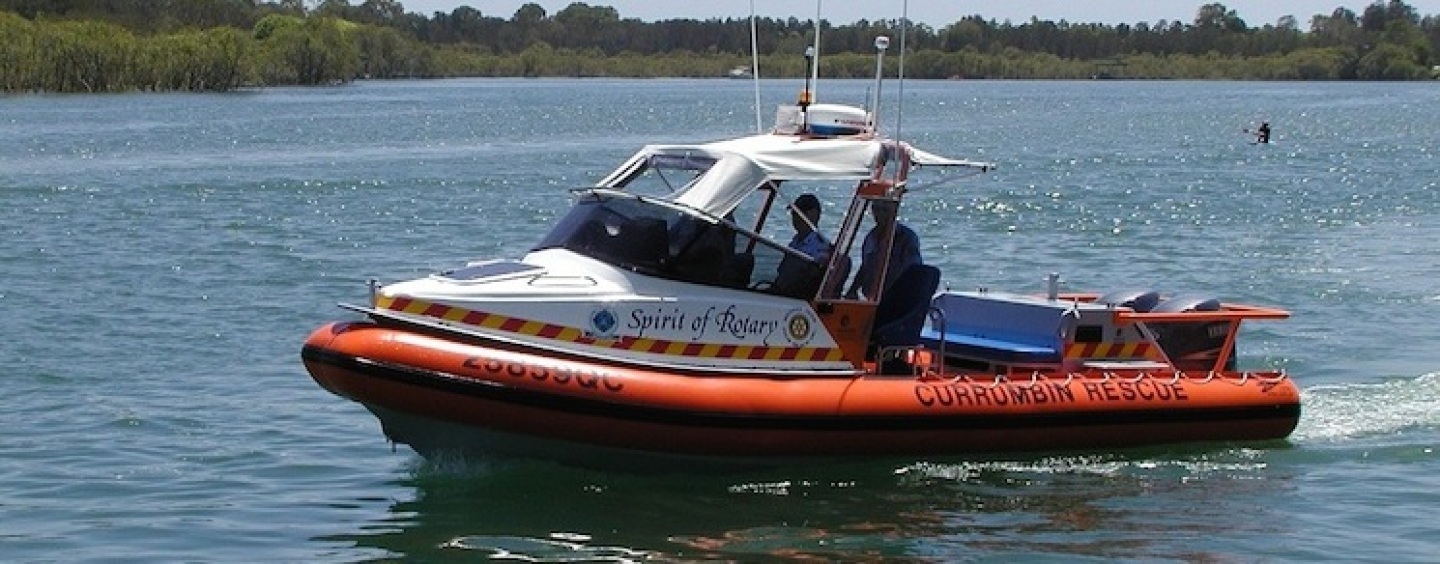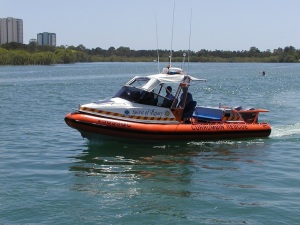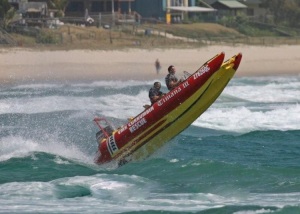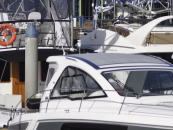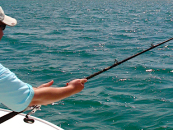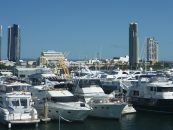Marine Rescue Currumbin has been based at Currumbin and operational for more than 40 years. The area of operation ranges from the Gold Coast Seaway to Point Danger, stretching as far as 50 nautical miles east of the Gold Coast shoreline.
The group has 60 operational volunteer members. The operations base at Currumbin Alley maintains a physical watch over Currumbin Bar, as well serving as a Marine Radio monitoring station every day of the year.
There are more than 12,000 vessel crossings each year at Tallebudgera and Currumbin bars, and rising, that are logged with us. We also monitor increased leisure activity, such as non-powered watercraft, surfing, swimming, Jetski, surf boat and the stand-up paddlers at the mouth of Currumbin Creek, causing what might loosely be termed as a lethal cocktail of potential disaster. This high density of varied use in such a restricted navigable waterway adds value to our watch over the Currumbin Bar and Estuary.
Our number of “rescues” is not high, around five in a year. (We are pleased about that!) Throughout the year, we respond to calls for assistance and advice—not rescue—while on patrol amounting to about another 25 or so calls for assistance.
Our Radio Room team members are the unsung heroes—always there, but never seen. Arriving before dawn each day, they record all vessel activity through Currumbin and Tallebudgera. A lesser known fact is that they also make SILVERCORD calls daily to the elderly, disabled or incapacitated. This is a simple community service, saying hello and making sure they are safe in their homes each morning. Local radio stations also call in each morning for a surf and bar report.
We welcome boaties into our base to view the Currumbin Bar from our Radio Room. It sits well above sea level and presents a panoramic view—very handy for local knowledge as the bar is forever changing. We also have radio communications with the Surf Lifesaving, to report matters of interest to Surf Lifesaving. Sometimes, we request they clear a channel if the density of water users is too high for vessels to safely cross the bar.
In the past, our rescue vessel and crew has been exposed to danger due to recreational water users behaving poorly, such as kite surfers jumping the towline while we are towing a recovered vessel through the bar, or surfers catching and then riding the same wave within a few metres of our vessel. In restricted waterways such as the Currumbin Bar, the members of the public need to know that in many instances, vessels have the right of way and may legally manoeuvre at a speed greater than six knots and close to other users while crossing the bar. This is not by choice but by necessity.
We witness many close calls between vessels and other water users and see firsthand some aggressive behaviour. Most incidents can easily be avoided by proper knowledge of who has the right of way and why, as well as simple courtesy and patience between the users. However, there is no excuse for stupidity.
To volunteer or offer funding support, call 0755341000 or email currumbin@marinerescueqld.org.au.
By Michael Brooks, President, Marine Rescue Currumbin






















